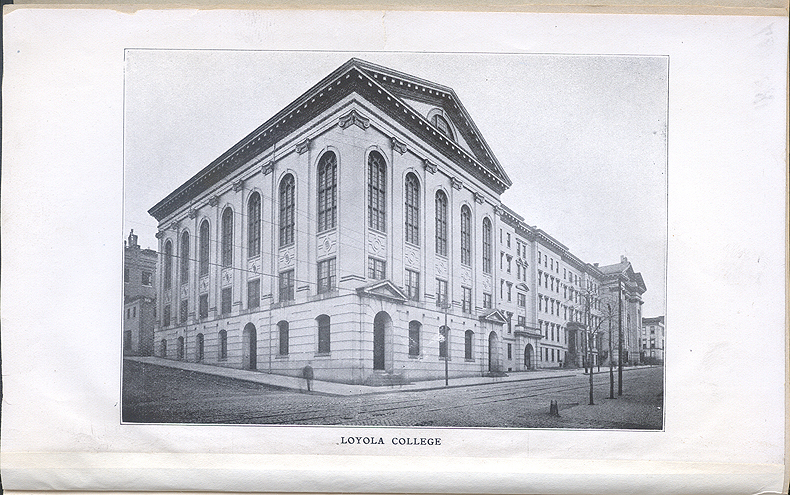
Bill Callis and Joelle Sanphy
Over 157 years ago the college began to function in two small houses on Holliday Street with a faculty and staff of nine Jesuits and a layman, and a student body of ninety-five. Tuition was sixty dollars a year. Today Loyola College occupies over sixty acres radiating north, east, and west of the Charles Street-Cold Spring intersection, with satellite location in Howard and Baltimore counties. Over 300 full-time and part-time faculty, some Jesuits, teach more than 6,000 undergraduate and graduate students. Tuition is more than a hundred times as much as at the college’s founding.
|
|
Loyola College, c. 1910. Loyola College Catalogue 1912-1915. |
The total history of Loyola College may be divided into three unequal
parts. Until 1921, Loyola was a traditional liberal arts college
offering both the secondary and collegiate levels of instruction. The
move to the Evergreen campus in 1921 and the desire for accreditation
by the Middle States Association severed the connection to high school
instruction and resulted in the conversion of Loyola into a small
commuter college. After World War II economic and demographic changes
impelled Loyola into its third incarnation, caught and pushed
successfully by Father Joseph Sellinger, who had been Loyola’s
president since 1964.
|
|
Reverend Francis Xavier Brady, President of Loyola College at the time James Walsh was a student. Loyola College Annual 1911-1913. |
James Walsh attended college here during the first manifestation of Loyola College’s
history, where he went through both the secondary and collegiate levels of instruction
(1). He later donated his textbook collection to the College archives.
This section of "The City That Reads" looks back to the time when James Walsh
was a student, at attempts to recover the role novels played in his education
during the first few decades of the 20th century (1).
The Loyola College English curriculum